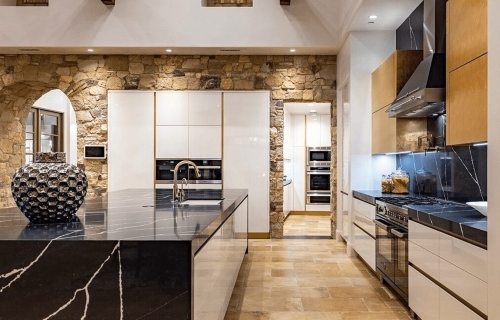The boom in lighting within the CI space has been appropriately occurring at light speed. Lighting is the hot new category, and everything it touches turns to gold–barring you get the design right.
Yes, designers, architects and homebuilders have come to love automated lighting and how intelligent controls plus various fixture types can impact a client’s enjoyment of a space, and homeowners love it, too.
According to a study put out by Lutron last year, 75% of respondents identified that controlling light in their home is the key to a better sleep routine (trending with wellness practices). Meanwhile, 78% said lighting control was essential to creating ambience in the home.
Note, though, amid all the praise of industry lighting, there is still that idea that it is better controlled in service of the design experience. As lighting has become more popular within the CI industry, lighting design has very quickly grown as a main differentiating factor for integrators on projects.
Wellness Movement Drives Demand for Better Lighting Design
One of the main reasons for this is that people have realized by now how “bad lighting” can impact their experience in a space. But “bad lighting” can mean a variety of things.
Going back to the Lutron survey, 74% of respondents stated that they will not even consider buying a home if they deem it to have poor lighting, in this case defined as natural-feeling lighting.
Just sourcing the right bulbs to provide the right color temperature and spectrum is a challenge, but being able to arrange and organize lighting in a way that best simulates the saturation and coverage of natural light requires some serious design chops.
Beyond this design-by-daylight approach, the concept of positively impacting customers’ experience through lighting is one that wholly relies upon lighting design in its execution. Reducing glare, minimizing shadows, providing focus where needed — it’s all lighting design, and as sellers of better home experiences, integrators have picked up on how important that knowledge is.
“Lighting is a very deep technical subject. It’s changing all the time. Lighting designers know how to select the right fixture to provide the right light in the right place,” notes Patrick Laidlaw of AiSPiRE. “It’s really easy to choose the wrong fixture and get horrible results. It’s not bright enough, doesn’t have the right lens or beam spread, or isn’t the right color temperature … Lighting designers and specifiers know the questions to ask and will lay it all out so those expensive mistakes don’t happen.”
Loads of Resources to Assist Integrators
The problem for a short while has been that lighting design is a very complex topic — and that goes for anyone trying to learn it.
But, if you’re not a lighting designer and have no intention of becoming one, there’s some good news: you don’t have to. Peter Sanford, CEO of Smarter Homes, even suggests integrators to separate themselves from the design side of things.
“Integrators have absolutely no place in the layout and lighting design,” Sanford says. “Too much of what they’ve seen will influence the customer instead of having someone who is well educated in lighting help the customer on that journey.”
However, that’s a bit of a double-edged sword. The reason why you don’t have to worry about it is because it’s very easy nowadays to work with a designer or design firm on a project. But for that very reason, that means there’s little-to-no excuse in most cases for not using one.
“Lighting designers who specialize in residential projects can be advantageous to an integrator because they know so many of the ins and outs and the breadth of lighting fixtures and components available,” adds Gregg Mackell, principal at HLB Lighting. “They have a lot of experience solving problems. They can make plan B look like it was plan A. They also bring to the project an understanding of what kind of construction issues you can get into and how to solve those problems when they arise…
“It’s important that integrators respect that and give lighting designers professional courtesy,” he adds. “Especially since having an integrator on the project presents the advantage of having someone who understands the different technologies and fixtures we specify and knows how to make them dim very smoothly. We can work together to create different scenes.”
There are also lighting firms such as Adaptive Design Group, Kaleidolight, Light Can Help You, and Lighting BOSS that have been working within the CI industry for years at this point and have intimate knowledge of how an integrator’s business ticks.
Manufacturers have also done plenty to help ease integrators into the design process, such as Vantage with its Lighting Fixture Alliance having a set of pre-tested fixtures that integrate into its own design software; Crestron with its recently released showroom design tool for dealers; and Lutron’s new Luxury Experience App to help customers envision potential solutions in their own homes.
The point is, if design isn’t already a focus of your lighting business, start working toward it.
“If there isn’t a lighting designer working on the project, you can still pitch it and outsource it. Tons of integrators outsource lots of things that they sell but don’t necessarily provide,” says Charlie Derk, vice president, Strategy, Legrand Shading & Controls. “I would recommend building a lighting designer network as soon as possible in order to be successful.”
See our other home technology trends and predictions for 2024 by clicking here.







